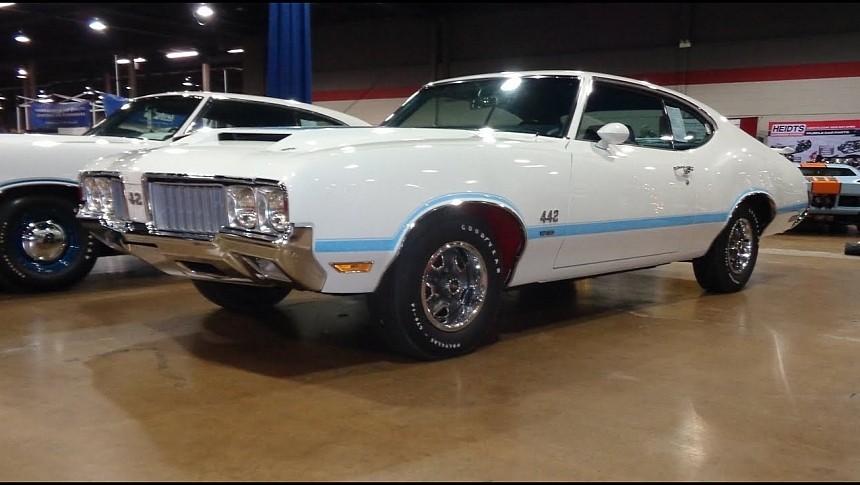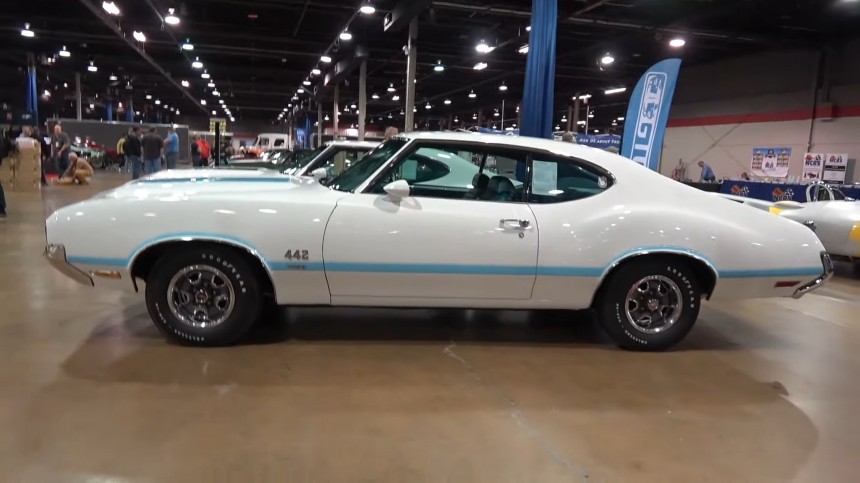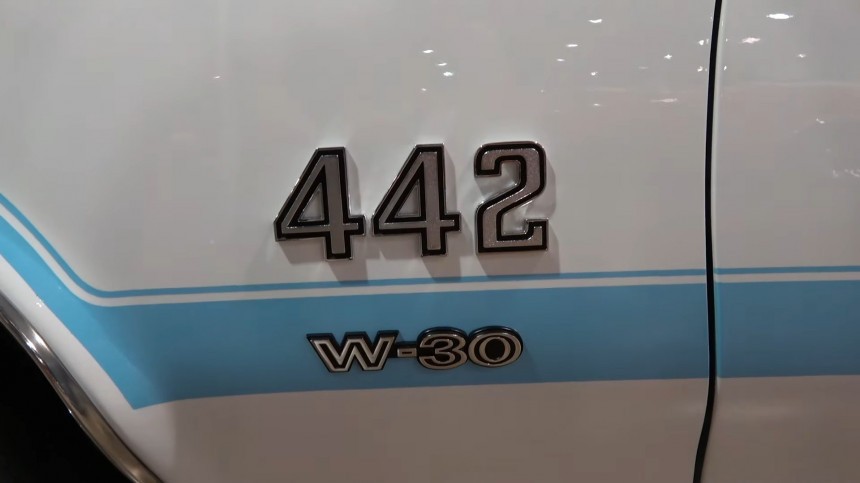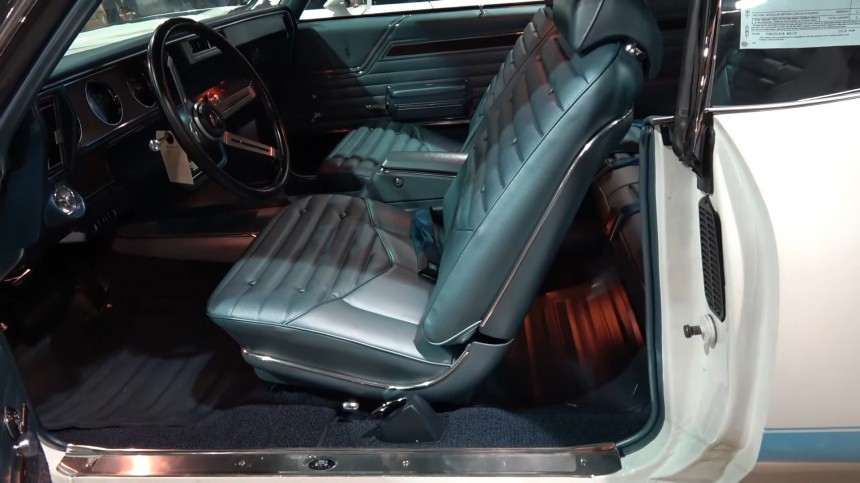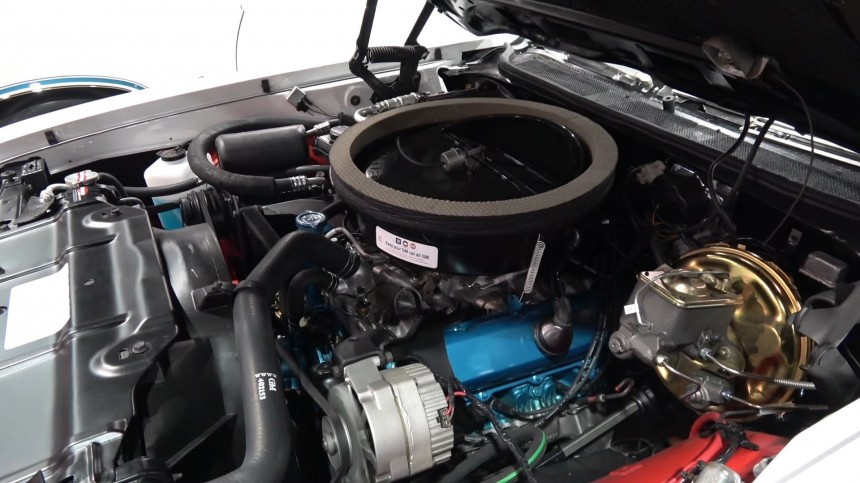Frankly, we should adopt a new calendar, don’t you think? Instead of setting the bearings to what is otherwise referred to as the beginning of the Common Era (CE), wouldn’t it be easier for the car nut society to reset the clock to 54 years ago? That’s 1970, when the muscle car beef hit an all-time high, and a certain Oldsmobile 442 W-30 became available.
It wasn’t the only good news coming from the upper floors of the GM headquarters. In fact, the biggest of the Big Three lifted the displacement veil from its divisions, allowing them to fire at will. And, boy, did they put out the big guns! Chevrolet sent the Chevelle with 454 cubic inches (7.4 liters) to take over the high seas of horsepower with the LS6’s 450 horsepower.
The other divisions put out similarly-sized battleships. Pontiac let the grandaddy of all muscle cars loose and gave the GTO a 455-incher (7.5 liters). Oldsmobile had its own version of a 455 (the Rocket V8). Buick played along, completing the holy trinity of enormous-displacing 455 V8s in the GM stable.
(Side note required: Cadillac had a 500-cubic-inch / 8.2-litre cataclysm. And yes, it was spelled exactly like that. Still, the luxury car was inherently indifferent to the quarter-mile quarrels of its brethren, so we won’t refer to it here and now).
Oldsmobile was not new to the muscle business. In fact, it had joined the GTO rebellion in the spring of ’64, with the hottest numbers, the 4-4-2. And, in case you’re wondering, the three digits didn’t reflect the engine size. Regardless of its spelling (hyphens or not), the 442 designation was unrelated to the sum of cylinder volumes.
In 1964, the deciphering meant a four-barrel carburetor, a four-speed manual transmission, and a dual exhaust – all standard equipment. It lost meaning in the following year when the standard gearbox was a three-speed with three pedals and fully manual operation (the four-speed was optional, though).
Finally, in 1970, the Oldsmobile 442 (without hyphens) received the big motor. An optional performance package (code W30 in the sales literature) was offered. To say that GM was on a horsepower spree would be correct but unfair: its divisions slammed the torque four-of-a-kind aces on the table, with figures around or in excess of 500 lb-ft (678 Nm) from each.
Naturally, being high-performance machines meant their production numbers fell in the four-digit section of the production run. 3,100 Olds 442s were assembled with the W30 option, aptly named the W-Machine Package in official documents. Check the window sticker on the example in the video.
It’s a full-fledged muscle car from Year One, an original (restored, not survivor) hottest-numbers-matching Olds muscle starring at the Muscle Car and Corvette Nationals from last November and vlogged by Lou Costabile. The car is rare even as far as W30s go: the original buyer wanted a 1969 Hurst/Olds with the High-Output 455 engine.
However, he couldn’t find one in time, and the model year went out of production. Soon after, the man – a persistent Texan – learned that the 1970 model 442 could be ordered with the same big engine. The Olds loyalist ordered one – this very example – and paid $5,350.14 in December 1969.
Still, one thing was missing – the rear deck lid wing, which became available in January of the following year. The customer – thinking about the Hurst/Olds he couldn’t get – promptly had one spoiler installed by a dealer.
His car has one rare feature – estimated that around 350 units came with it in 1970: the aluminum housing and cover for the differential (those two extras cost $157 and $58 respectively). Also, this muscle-bound Olds was equipped with air conditioning (a burning $375 option), an 8-track player, and a dual-gate Hurst shifter. Because it has factory air, the rear gearing ratio is 3.23.
There was one more air option that was part of the W30 package: the Force-Air induction hood, made of fiberglass, that sucked cold air and pushed straight into the four-barrel carb. With this feature, the big V8 could put out 370 hp (375 PS) and 500 lb-ft (678 Nm).
As noted above, this example has the three-speed Turbo Hydra-Matic automatic transmission. It was an expensive $227 option, but it turned out to be the preferred one since 1,542 examples were fitted with one. The current owner has had the muscle Olds since 2015 and put it through a complete restoration that ended in December 2022 (52 years after the car was assembled).
This would explain why the odometer read just 17 miles (27 km). As for the job itself, the challenge came from the interior. The blue trim isn’t a simple ode-color-only hue but eight different tones. It sounds nice when read aloud from a sales brochure, but good luck finding the correct parts when getting a survivor back to factory specs.
The other divisions put out similarly-sized battleships. Pontiac let the grandaddy of all muscle cars loose and gave the GTO a 455-incher (7.5 liters). Oldsmobile had its own version of a 455 (the Rocket V8). Buick played along, completing the holy trinity of enormous-displacing 455 V8s in the GM stable.
(Side note required: Cadillac had a 500-cubic-inch / 8.2-litre cataclysm. And yes, it was spelled exactly like that. Still, the luxury car was inherently indifferent to the quarter-mile quarrels of its brethren, so we won’t refer to it here and now).
In 1964, the deciphering meant a four-barrel carburetor, a four-speed manual transmission, and a dual exhaust – all standard equipment. It lost meaning in the following year when the standard gearbox was a three-speed with three pedals and fully manual operation (the four-speed was optional, though).
Finally, in 1970, the Oldsmobile 442 (without hyphens) received the big motor. An optional performance package (code W30 in the sales literature) was offered. To say that GM was on a horsepower spree would be correct but unfair: its divisions slammed the torque four-of-a-kind aces on the table, with figures around or in excess of 500 lb-ft (678 Nm) from each.
It’s a full-fledged muscle car from Year One, an original (restored, not survivor) hottest-numbers-matching Olds muscle starring at the Muscle Car and Corvette Nationals from last November and vlogged by Lou Costabile. The car is rare even as far as W30s go: the original buyer wanted a 1969 Hurst/Olds with the High-Output 455 engine.
However, he couldn’t find one in time, and the model year went out of production. Soon after, the man – a persistent Texan – learned that the 1970 model 442 could be ordered with the same big engine. The Olds loyalist ordered one – this very example – and paid $5,350.14 in December 1969.
His car has one rare feature – estimated that around 350 units came with it in 1970: the aluminum housing and cover for the differential (those two extras cost $157 and $58 respectively). Also, this muscle-bound Olds was equipped with air conditioning (a burning $375 option), an 8-track player, and a dual-gate Hurst shifter. Because it has factory air, the rear gearing ratio is 3.23.
There was one more air option that was part of the W30 package: the Force-Air induction hood, made of fiberglass, that sucked cold air and pushed straight into the four-barrel carb. With this feature, the big V8 could put out 370 hp (375 PS) and 500 lb-ft (678 Nm).
This would explain why the odometer read just 17 miles (27 km). As for the job itself, the challenge came from the interior. The blue trim isn’t a simple ode-color-only hue but eight different tones. It sounds nice when read aloud from a sales brochure, but good luck finding the correct parts when getting a survivor back to factory specs.
